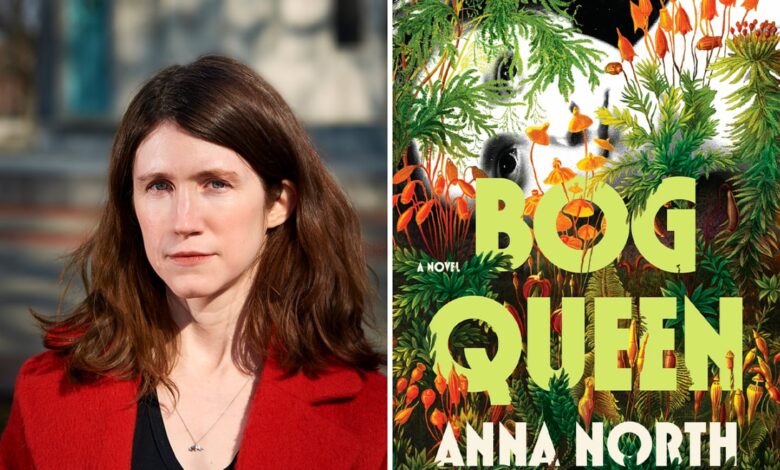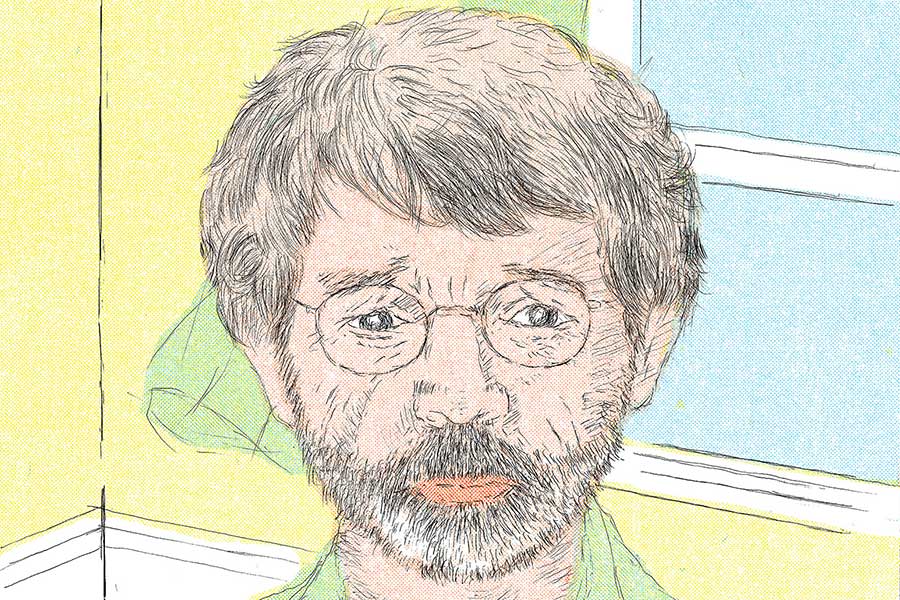Anna North’s ‘Bog Queen’ tells two women’s stories

Parallel lines never meet in geometry class, but the convergence of parallel narratives is one of the most routine recipes for modern storytelling. The approach gives authors an essentially unlimited canvas to tie together disparate people, places, and things across time and space, yet it’s difficult to envision a broader spectrum than the one in Anna North’s ambitious new novel, “Bog Queen,” which interweaves the lives of two 20-something women separated by more than 2,000 years.
Agnes is a precocious archeologist finishing her postdoc work at the University of Manchester and assisting the coroner’s office in the nearby English village of Ludlow with any bones that come across its mortuary slab. In April 2018, she’s called in to confirm that a corpse uncovered in the local peat bog is that of Isabela Navarro, who was murdered by her husband in 1961. A quick glance at the teeth of the “bog body” — “a metal cast of a human being” pristinely preserved by the peat — is all Agnes needs to know that this corpse died much longer than 60 years ago.
Flashback to the Iron Age around 25 BCE and the Druid of Bereda, a priestess, is traveling from the Ludlow area to the fortified Celtic town of Camulodunon (today’s Colchester, about an hour northeast of London). The young woman has been summoned by an unnamed king eager to forge an alliance against a territory bordering Bereda that is controlled by the druid’s childhood friend.
The novel volleys between these twinned protagonists as they encounter various barriers along their journeys. Early on, the druid must decide a paternity claim using a bowl of milk and a few drops of blood, but her real adventures don’t begin until her arrival in Camulodunon, which reads like a Ren Faire version of King’s Landing from “Game of Thrones.” The druid playfully flirts with the king, gets hustled on the street by a man playing a variation of checkers, and encounters early influences of the Roman Empire, which won’t conquer Britain for another 60-some years but whose gods and religious officials have made inroads since Julius Caesar’s expeditions in 55 and 54 BCE, a few years before the druid’s birth.
Agnes’s impediments largely stem from a handful of environmentalists led by the charismatic Nicholas, a “Black kid with a weird hippie white mum.” Despite the local peat company having owned and harvested the bog for 20 years, the protesters have decided now is the time to “occupy” the moss since it will soon be developed into apartment buildings. Peat is a valuable counterweight to climate change because of its ability to recapture carbon, so the protesters have recently filed a lawsuit “claiming environmental harm” by the peat company. While it is pending, they don’t want Agnes digging for more clues to the bog body’s identity.
The novel’s overall ride is enjoyable enough, but I often got tripped up by specifics. For example, why does the peat company do nothing about the trespassing protesters? They don’t want bad PR, but that fear is rather tenuously attributed to public outcry over an anti-Brexit protest where a cop punched a student, causing him to have a heart attack and die, a tragedy that seems wildly unrelated to removing a dozen people from a bog. And why has Isabela Navarro’s niece flown in from Spain to collect her aunt’s remains before Agnes has even identified the body? Isabela’s story line is used to extremely tidily bookend the novel, but her perspective would have been more engrossing as a third narrative through-line.
Agnes can be rather inscrutable. Readers are told she is extremely gifted, enrolling in college early, and boldly independent, pursuing her postdoc in the UK to escape the controlling duo of her boyfriend and father in the Rocky Mountain West. But in Ludlow she is primarily defined by self-doubt and anxiety. Early in the novel, she is said to have “an instinct for the body and its forms,” able to divine pregnancy and identify someone’s profession by the way they walk, but that Sherlockian gift of perception is never actually demonstrated. Instead she worries that Nicholas will think she is “childish” for riding the bus. (Are British environmentalists big car guys?) Even her scientific rationality disappears as she frets that if she can’t determine the cause of death for a 2000-year-old body, everything she has done will be negated.
The druid, however, remains intriguing throughout the novel. Once she leaves Camulodunon and returns to Bereda, she has to make tough choices regarding the king’s proposed alliance, choices that are clearly unpopular since she ends up dead in the bog. North is making some thoughtful arguments here, loosely likening Brexit’s anti-European Union stance to the Celtic hesitation about the Roman Empire, but it all gets wrapped up hastily. The opposition is never clearly voiced, probably to preserve mystery about the druid’s ultimate demise, but the village is enjoyable enough that I think I just wanted more time there. It’s amusing when someone worries that their easily distracted children might have to knuckle down and learn Latin, but it’s also heartening to see people acknowledge that isolationism — even back then — was no longer viable. As a village elder advises the druid: “The time when we could just be cozy here in our village is coming to a close, and if I don’t see the end of it, then you will.”
BOG QUEEN
By Anna North
Bloomsbury, 288 pages, $28.99
Cory Oldweiler is a freelance writer.


